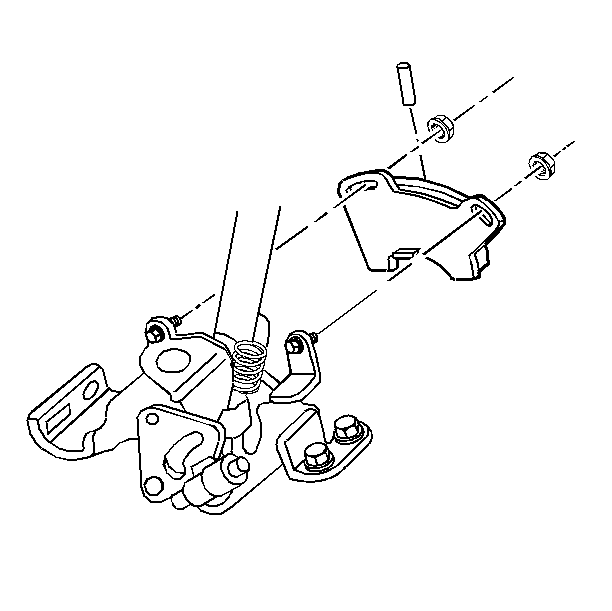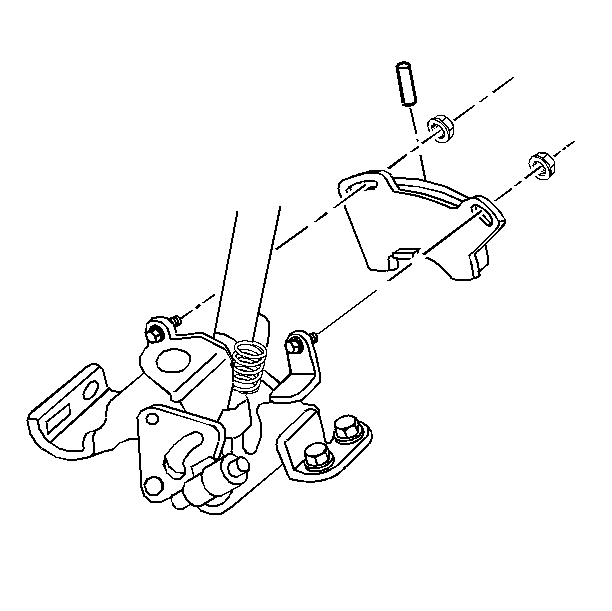Removal Procedure
- Disconnect the negative battery cable. Refer to
Caution: Unless directed otherwise, the ignition and start switch must be in the OFF or LOCK position, and all electrical loads must be OFF before servicing any electrical component. Disconnect the negative battery cable to prevent an electrical spark should a tool or equipment come in contact with an exposed electrical terminal. Failure to follow these precautions may result in personal injury and/or damage to the vehicle or its components.
in General Information. - Remove the console trim plate. Refer to Section 8C.
- Remove the park/neutral position switch mounting nuts.
- Remove the park/neutral position switch.
- Remove the gage pin.


Installation Procedure
New Switch
- Place the shift control lever in N (Neutral).
- Insert the carrier tang on the switch into the slot on the shifter.
- Install the mounting nuts.
- Move the shift control lever out of the N (Neutral) position in order to shear the plastic pin.
- Install the gage pin.
- Install the console trim plate. Refer to Section 8C.
- Connect the negative battery cable.


Tighten
Tighten the nuts to 3 N·m (26 lb in).
Notice: Use the correct fastener in the correct location. Replacement fasteners must be the correct part number for that application. Fasteners requiring replacement or fasteners requiring the use of thread locking compound or sealant are identified in the service procedure. Do not use paints, lubricants, or corrosion inhibitors on fasteners or fastener joint surfaces unless specified. These coatings affect fastener torque and joint clamping force and may damage the fastener. Use the correct tightening sequence and specifications when installing fasteners in order to avoid damage to parts and systems.
Important: If the holes do not align with the shift control, verify that the shift control lever in is the N (Neutral) position. Do not rotate the switch. The switch is pinned in the N (Neutral) position. If the switch has been rotated and the pin in broken, adjust the switch. Refer to Old Switch Installation.

Important: Ensure that the engine will only start in the P (Park) and N (Neutral) position. If the engine will start in any other position, readjust the switch. Refer to Old Switch Installation.
Old Switch
- Place the shift control lever in N (Neutral).
- Insert the carrier tang on the switch into the slot on the shifter.
- Install the assembly mounting nuts to the case, loosely.
- Rotate the switch in order to align the service adjustment hole with the carrier tang hole.
- Insert the gage pin 2.34 mm (0.094 in.) into the service adjustment hole. Rotate the switch until the pin drops to a depth of 15 mm (0.59 in.).
- Install the gage pin.
- Install the console trim plate. Refer to Section 8C.
- Connect the negative battery cable.



Tighten
Tighten the switch retaining nuts to 3 N·m (26 lb in.).
Important: Ensure that the engine will only start in the P (Park) or N (Neutral) position. If the engine will start in any other position, readjust the switch.
